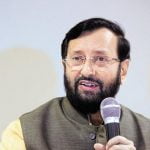
New Delhi: A parliamentary panel has recommended including modules on Ayurveda, Unani, Siddha and Homoeopathy (AYUSH) treatments in MBBS courses and vice versa, in a bid to reconcile allopathic and alternative systems of medicines and generate faith in AYUSH treatments.
The standing committee on health and family welfare said practitioners of modern medicine systems do not have much faith in AYUSH and often question their credibility and scientific validation. This is despite India being knowledge repository of traditional medicine since ages, it said.
“The committee, accordingly, recommends to the ministry to take concrete steps in introducing modules of modern system of medicine in the curriculum and pursue the ministry of health and family welfare for introducing similar modules of AYUSH systems of medicines in their MBBS course,” the committee report tabled in Parliament last week said.
An integrated approach will help understand the strengths of each system of medicine and increase the credibility of AYUSH, the report said.
“The need of the hour is to streamline the AYUSH systems of medicine by standardization and quality control of Ayurveda, Siddha, Unani and Homoeopathy drugs and improving the quality of education and healthcare services through AYUSH,” it said.
“At the same time, the curricula of both modern systems of medicine and AYUSH system need to be changed in such a way to strive for integration in the study of medical education itself followed by cross system referrals and integrated healthcare services,” it said.
Mixing courses of different systems of medicine is not rational, commented Anoop Misra, chairman of Fortis-C-DOC Centre for Diabetes, Metabolic Diseases and Endocrinology. “However, Ayush doctors can have short stints in hospitals to know various types of patients. An MBBS aspirant should only stick to science-based medicine course as previously,” said Misra. Previously too, in several articles published in Lancet in 2016, Misra had expressed doubts over the efficacy of Ayurvedic drugs claimed to treat diabetes.
Recently, health ministry has started co-locating AYUSH facilities at public health centres, community health centres and district hospitals. The committee also noted that AYUSH doctors are also participating in the National Health Programme and public health outreach activities and research activities undertaken to facilitate integration of Ayurveda and allopathic systems of medicine.
According to a study by the Delhi University’s Institute of Economic Growth published in PLOS One journal in 2017, only 6.9% of all patients who sought outpatient care used AYUSH, 3.5% used Indian systems of medicine such as Unani and Siddha, and 3% used homoeopathy. The study was based on a nationally representative health survey 2014 with the total sample size of 65,932 households (36,480 rural and 29,452 urban) comprising of 333,104 individuals (189,573 rural and 143,531 urban).
“This is consistent with the fact that use of allopathy treatment is more common and that there is hardly any differentials in use pattern across rural and urban India. Also, allopathy care accounted for over 90% of outpatient care across key socioeconomic and demographic variables,” the study said. “Overall, AYUSH utilization in India (about 7% of outpatient care) appears to be on the lower side when compared to some of the previous estimates or general perceptions,” it further said.
The study found that the use of AYUSH among middle-income households was lower when compared with poorer and richer households. AYUSH care utilization was higher among patients with chronic diseases and also for treating skin-related and musculo-skeletal ailments, the study observed.
[“Source-livemint”]










